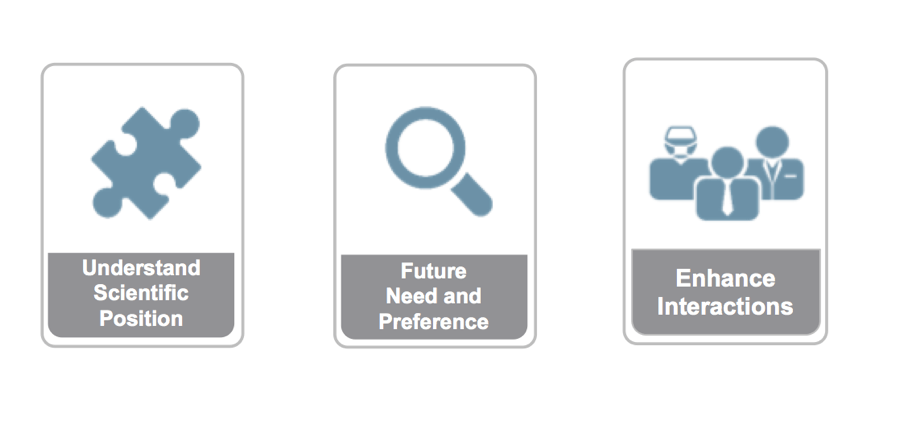Blog
3 Best Practices for Evolving Field Medical Affairs Teams and Managing Change
Aug 09, 2017 | Jennifer Vernazza
Aug 09, 2017 | Jennifer Vernazza
Ms. Vernazza contributed to this article in her personal capacity. The views expressed are her own and do not necessarily reflect the views of Sanofi or Sanofi Genzyme.
Life sciences leaders are scaling medical teams to match the role’s expanded remit – a move that means increasing not only their size, but also their strategic scope. While our industry is making strides in expanding the number of medical science liaisons on the job, more work is needed on the second half of the equation: transforming the role itself and empowering MSLs to thrive in it.
Today’s healthcare landscape is incredibly networked, and HCPs face an acute need for timely answers to more complex scientific questions. Layer on the demands of transitioning to digital, and it is clear that field medical requires a shift in approach. Medical field-based teams should consider new processes enabling MSLs to reach the right stakeholders, quickly tailor engagement, and capture insights for more data-driven strategies. Fueled by a multichannel CRM systems designed for medical affairs, this represents a new way of approaching scientific engagement.
In my last post, I discussed key capabilities the modern MSL needs. But what steps can companies take to move forward, and what does the journey look like?
As medical teams evolve, they’ve uncovered best practices along the way that have smoothed the path toward thinking and working differently:
Creating a Culture of Change
Successful, strategic organizational change requires a high level of communication (early and often) to all relevant teams. Months before a roll out, start communicating about the change in order to foster high adoption when the system is deployed. Also, recruitment of a strong network of internal change champions is key. Digital-savvy end users not only help design the requirements and customize the build out, but also act as ambassadors for the impending change. They will talk with colleagues about the timeline, the benefits of the change, and what to expect. This way, all stakeholders know exactly who contact with questions and where to get updates.
Data-driven Planning and Engagement
Another success factor in implementing a new CRM is taking full advantage of medical data. With so much valuable information collected, how will it be used effectively to shape medical strategies? Using and analyzing data on customer interests and channel preferences, as well as leveraging reports and dashboards to evaluate performance of teams, is crucial. Taking hundreds of clinical insights collected in a CRM and performing data mining or text analytics to pull out scientific trends is extremely valuable. When MSLs start seeing this data, and uncovering insights that are immediately actionable, they get excited about building stronger relationships – in turn speeding adoption.

Leveraging the data in medical CRM, medical affairs teams can get a full picture of KOLs’ scientific interests in order to improve KOL engagement.
Key activity metrics can be viewed to determine resource capacity planning exercises and how to best grow field-based teams. For instance, if data shows MSLs are spending most of their time on internal activities, it signals a fundamental is needed with either team sizing or prioritization. At the end of the day, the value of technology is its ability to contribute meaningfully to business decisions.
The Right Foundation
Another key success factor is the ability to maximize technology to achieve medical goals without being burdensome for MSLs. Tool and systems should be as easy as possible for field teams, meaning the system has to work seamlessly from a technical perspective, with short data sync times, and proper alignment of stakeholders into their universe. Because MSLs spend so much time traveling in the field, the system needs to be intuitive – these teams don’t have time to waste figuring out software between meetings with stakeholders.
Beyond usability, it should be easy for MSLs to visualize the healthcare landscape as well as gain deep insight into each stakeholder, directly in their workflow. This level of visibility allows for faster and more strategic pre-call planning, as well as mapping strategies to account-specific objectives. Finally, tools should be easy for MSLs to capture information from interactions, across all channels, and refine engagement based on insights and analytics.
It’s an exciting time to be in medical affairs. Science is advancing every day, and field-based medical teams have the opportunity to make an impact in delivering better healthcare and improving patients’ lives. Realizing this vision means taking a look at how we approach our partnership with healthcare, adapting and growing with the evolution of our industry.